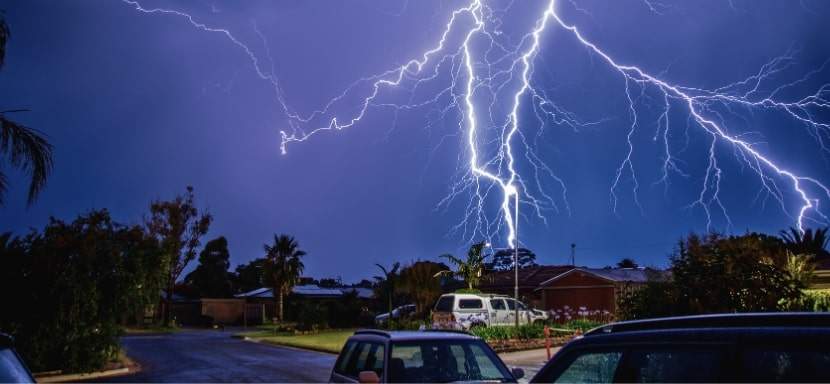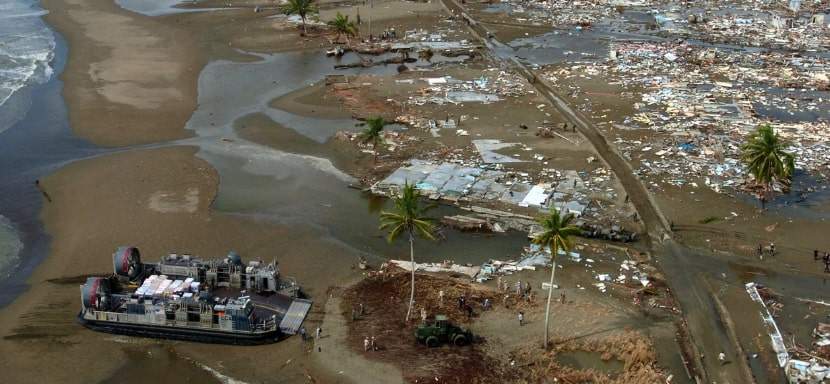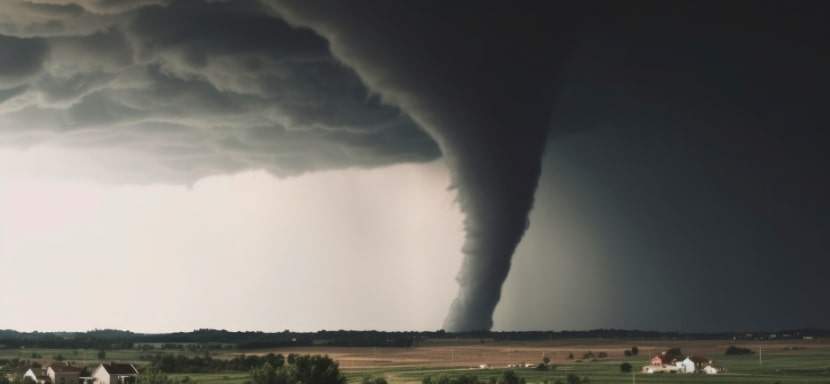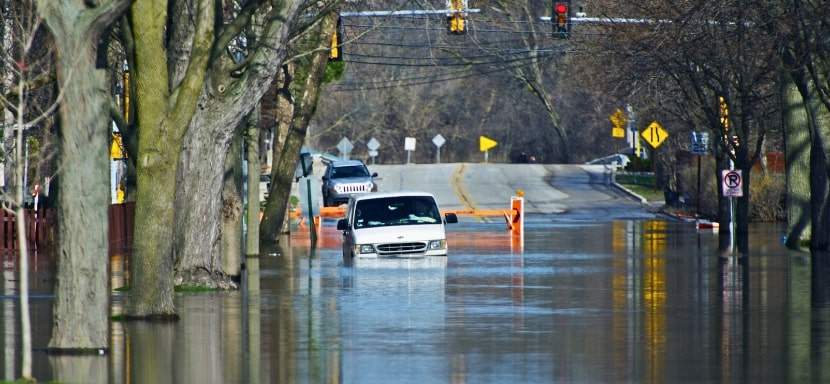How to Survive a Lightning Strike

Thunderstorms are a mesmerizing display of nature’s power, but they also bring the terrifying threat of lightning strikes. Each year, thousands of people worldwide are affected by lightning, with severe injuries and even fatalities resulting from these sudden electrostatic discharges. Understanding how to protect yourself during a thunderstorm is crucial for your safety.
My guide will equip you with essential tips and strategies for surviving a lightning strike. From understanding the science behind lightning to practical safety measures for various scenarios, this article provides the knowledge you need to stay safe. Whether caught outdoors during a storm or seeking to safeguard your home and loved ones, these insights will help you navigate thunderstorms confidently and cautiously.
Key Points
- Seek Immediate Shelter: Find a sturdy building or vehicle to protect yourself during a lightning storm.
- Avoid High-Risk Areas: To reduce the risk of being struck, stay away from open fields, water, high ground, and tall objects.
- Act Quickly If Struck: Call for medical help immediately, perform CPR if needed, and move the victim to a safe location.
Understanding Lightning
Let’s start with the basics – what exactly is lightning? Lightning is a sudden electrostatic discharge produced during a thunderstorm. It can happen within a cloud, between clouds, or between a cloud and the ground. When lightning strikes the ground, it can be incredibly powerful and destructive.
Understanding how lightning works can help you stay safe during a storm. Remember, if you can hear thunder, you are close enough to be struck by lightning.
10 Quick Tips on How to Survive a Lightning Strike
- Seek immediate shelter in a sturdy building or a hard-topped vehicle.
- Avoid open fields, the tops of hills, or any high ground.
- Stay away from tall, isolated trees or other tall objects.
- Get out of and away from bodies of water.
- Stay off bicycles, motorcycles, scooters, and golf carts.
- Avoid touching anything metal, such as fences, poles, or equipment.
- If no shelter is available, crouch down with your feet together, your head tucked, and your hands over your ears.
- Don’t lie flat on the ground; it increases your chance of being hit.
- Stay indoors for at least 30 minutes after you hear the last clap of thunder.
- Monitor weather forecasts and warnings to avoid being caught outdoors during a storm.
What to Do If You’re Caught Outdoors
Sometimes, despite our best efforts, we may be caught outdoors during a lightning storm. Knowing what to do in this situation can be life or death.
Seek Shelter
If you are caught outdoors during a lightning storm, seek shelter immediately. Look for a sturdy building or a metal-topped vehicle to protect yourself from the lightning. Avoid seeking shelter under trees or in open structures.
Avoid Water
Water is a great conductor of electricity, so avoid bodies like lakes, rivers, or ponds during a lightning storm. If swimming or boating, get to shore quickly and seek shelter.
Spread Out
If you are in a group outdoors during a lightning storm, spread out to minimize the risk of multiple people being struck by lightning. Do not huddle together or cluster in one area.
By following these tips, you can increase your chances of surviving a lightning strike while outdoors.
Did You Know?
Lightning strikes the Earth approximately 8 million times a day, and each bolt can contain up to 1 billion volts of electricity, making it one of nature’s most powerful phenomena.
What to Do If You’re Struck by Lightning
Being struck by lightning is a terrifying experience, but knowing what to do if it happens to you or someone else is essential.
Immediate Actions
If you or someone you are with is struck by lightning, take the following immediate actions:
- Call 911 for medical help.
- Check for breathing and a heartbeat.
- Perform CPR if necessary.
- Move the victim to a safe location.
Remember, a lightning strike can cause serious injuries, including burns, cardiac arrest, and neurological damage. It is crucial to seek medical attention immediately after a lightning strike.
Aftercare
After a lightning strike, the victim may experience shock, confusion, or memory loss. Keep the person calm and reassure them until help arrives. Remove them from where they were struck and monitor their vital signs.
Lightning Safety Indoors
While being indoors during a lightning storm is safer than being outdoors, there are still risks to consider.
Stay Away from Electronics
Lightning can travel through electrical systems, so staying away from electronics like computers, phones, and appliances during a storm is important. Also, unplug sensitive equipment to prevent damage from power surges.
Avoid Water
As mentioned earlier, water is a great conductor of electricity. Avoid using water during a lightning storm, including showers, baths, and washing dishes.
Stay Away from Windows
Windows can shatter during a lightning strike, so staying away from windows and glass doors during a storm is essential. Move to an interior room or hallway for safety.
By following these tips, you can stay safe indoors during a lightning storm and reduce your risk of being injured by lightning.
Lightning Safety for Pets
Our furry friends are also vulnerable to lightning strikes. Here are some tips to keep your pets safe during a storm.
Bring Pets Indoors
Please bring your pets indoors during a lightning storm to keep them safe. Dogs chained outside can be at risk of being struck by lightning, so make sure they have a safe place inside.
Comfort Your Pets
Many pets are afraid of lightning and thunder. Comfort your pets during a storm by staying with them, providing a safe space, and distracting them with toys or treats.
Avoid Walking Dogs
If you must take your dog outside during a lightning storm, keep walks short and avoid open areas. Remember, if you hear thunder, you are close enough to be struck by lightning.
By following these tips, you can keep your pets safe during a lightning storm and reduce their risk of injury.
Common Myths About Lightning Strikes
Understanding the truth about lightning strikes can help you stay safe during thunderstorms.
Here are some common myths and the facts that debunk them:
Myth: Lightning never strikes the same place twice.
Fact: Lightning can and often does strike the same place multiple times.
Myth: Rubber tires on a car protect you from lightning by insulating you from the ground.
Fact: The car’s metal frame protects you by directing the lightning to the ground.
Myth: If caught outdoors, lying flat on the ground is the best way to avoid being struck.
Fact: Lying flat increases your chance of being affected by ground current. Crouch down instead.
Myth: Lightning only strikes during heavy rain.
Fact: Lightning can strike even if it is not raining, known as a “bolt from the blue.”
Myth: If you touch a lightning strike victim, you will be electrocuted.
Fact: Lightning strike victims do not carry an electrical charge and can be safely touched to administer first aid.
Myth: Structures with metal or jewelry attract lightning.
Fact: Metal does not attract lightning, but it conducts it. An object’s shape, size, and height are more critical factors.
Myth: You are safe from lightning if you are indoors.
Fact: While safer indoors, lightning can still pose risks. Avoid using electronics and plumbing, and stay away from windows.
Myth: Lightning rods attract lightning.
Fact: Lightning rods do not attract lightning but provide a path to direct the lightning to the ground safely.
Myth: Wearing rubber shoes protects you from lightning.
Fact: Rubber shoes provide no significant protection from lightning strikes.
Myth: Lightning victims are always burned.
Fact: While lightning can cause burns, many injuries result from intense electrical shocks that affect the heart and nervous system.
FAQs
How can you tell if a storm is close enough to produce lightning?
If you hear thunder, you are close enough to be struck by lightning. Always seek shelter if you hear thunder.
What should you do if you're stuck outdoors during a lightning storm?
Seek shelter immediately, avoid water and tall objects, and crouch down with your feet together if no shelter is available.
Is it safe to use electronic devices during a lightning storm?
Avoid using electronic devices and unplug sensitive equipment to prevent damage from power surges caused by lightning.
Can lightning strike through windows?
Yes, lightning can shatter windows. Stay away from windows and move to an interior room during a storm.
What should you do if someone is struck by lightning?
Call 911, check for breathing and a heartbeat, perform CPR if necessary, and move the victim to a safe location.
What if I encounter problems at the polling place?
If you face issues like long lines, technical problems with voting machines, or questions about your eligibility, report them to a poll worker immediately. You can also contact your local election office for further assistance.
Conclusion: How to Survive a Lightning Strike
Surviving a lightning strike involves preparation, awareness, and quick action. Understanding the nature of lightning, knowing how to stay safe indoors and outdoors, and being prepared to act quickly if struck can make a significant difference.
Always prioritize safety and remember these tips during thunderstorms to protect yourself, your loved ones, and even your pets from the dangers of lightning. Stay safe, stay informed, and be prepared for the unexpected.
Famous Recorded Lightning Strikes in History
Several notable lightning strikes have made headlines throughout history due to their significant impact and unique circumstances. Here are some of the most famous recorded lightning strikes, listed from oldest to newest:
- The Oflag IV-C, Colditz Castle (1943): During World War II, the castle used as a high-security prisoner-of-war camp was struck by lightning, killing a guard and causing a fire.
- Roy Sullivan (1942-1977): A park ranger who survived being struck by lightning seven times, earning him a place in the Guinness World Records.
- NASA’s Apollo 12 Mission (1969): Shortly after launch, lightning struck the spacecraft twice but continued its mission successfully.
- Chicago’s Sears Tower (1978): Struck by lightning multiple times in a single storm, leading to an awe-inspiring photograph of the event.
- The Oil Tanker, Golar Patricia (1984): Lightning struck it in the Gulf of Mexico, resulting in a massive fire and oil spill.
- The Empire State Building, New York: Struck by lightning approximately 25 times a year, demonstrating the structure’s role as a lightning rod.
- Tokyo Skytree, Japan (2012): The tallest structure in Japan, regularly struck by lightning, demonstrating advanced engineering to withstand such strikes.
- St. Peter’s Basilica, Vatican City (2013): On the day Pope Benedict XVI announced his resignation, lightning struck the basilica, which many saw as an ominous sign.
- The Shrine of Our Lady of Manaoag, Philippines (2014): It was struck by lightning, causing minor damages, but it was seen as miraculous because there were no casualties.
- The Eiffel Tower, Paris: Struck by lightning around ten times a year, highlighting its role as a global icon and a lightning conductor.
More Nature’s Wrath Scenarios
How to Survive a Wildfire
Wildfires are one of nature’s most unpredictable and destructive forces, and they can engulf entire…
How to Survive a Landslide
Landslides are one of nature’s sudden, unexpected acts, like finding a $20 bill in an old jacket, but far…
How to Survive a Hurricane
Hurricanes are nature’s way of reminding us who’s in charge—think of it as the weather throwing a…
How to Survive a Tsunami
Surviving a tsunami is a terrifying thought, but it’s something we should all be aware of, especially if we…
How to Survive a Tornado
Tornadoes are among the most unpredictable and destructive natural phenomena. Their sudden…
Recent Survival Posts
How to Survive a Layoff
Layoffs feel personal—even when they’re not. One day, you’re responding to Slack messages and forwarding…
How to Survive a Drug Test
I never imagined I’d be so emotionally invested in a paper cup. But there I was, standing under the fluorescent…
How to Survive an Interrogation
If you’ve ever been caught in the crosshairs of an overly enthusiastic mall cop or stared down by someone…
How to Survive a Nightclub Shooting
Nightclubs pulse with life—lights flashing, music pounding, bodies packed tight on the dance floor. It’s a place to…
How to Survive a Bachelor Party
A bachelor party is a delicate mix of celebration, chaos, and questionable decision-making, wrapped…
More Nature’s Wrath Survival Scenarios

How to Survive a Landslide
Landslides are one of nature's sudden, unexpected acts, like finding a $20 bill in an old jacket—only there's no thrill of discovery, just destruction. They strike without much warning, sweeping away everything in their path—homes, roads, vehicles, and, tragically,...

How to Survive a Hurricane
Hurricanes are nature's way of reminding us who's in charge—think of it as the weather throwing a tantrum. The winds howl, the rain pours, and trees bend until they snap. But while hurricanes are frightening, surviving them is possible with good preparation, clear...

How to Survive a Tsunami
Surviving a tsunami is a terrifying thought, but we should all be aware of it, especially if we live near coastlines. A tsunami can strike with little warning, and the key to making it through alive is to know what to do before, during, and after the waves hit. Here,...

How to Survive a Tornado
Tornado Safety: How to Survive and Protect Your Family Learn life-saving strategies to protect yourself and your loved ones from the unpredictable fury of tornadoes. Tornadoes are among the most unpredictable and destructive natural phenomena. Their sudden and violent...

How to Survive a Heat Wave
How to Beat the Heat: Essential Strategies for Surviving a Heat Wave Heat waves are the deadliest weather-related disaster in the United States, causing more annual fatalities than hurricanes, tornadoes, and floods. Heat waves can be overwhelming, making us feel like...
More Survival Scenarios

How to Survive a Layoff
When the Floor Falls Out: The Reality of a Layoff Layoffs feel personal—even when they're not. One day, you're responding to Slack messages and forwarding emails. Next, you're staring at your monitor as it logs you out... for good. Whether it's a restructuring, a...

How to Survive a Drug Test
The Cup, The Room, The Truth I never imagined I’d be so emotionally invested in a paper cup. But there I was, standing under the fluorescent hum of a strip-mall clinic, trying to recall the last time I ate a poppy seed bagel. That’s the thing about drug tests—they...

How to Survive an Interrogation
If you've ever been caught in the crosshairs of an overly enthusiastic mall cop or stared down by someone in a uniform with a clipboard and a glare, you’ve felt it — the chilly fingers of interrogation anxiety. And while most of us imagine interrogation scenes as...

How to Survive a Nightclub Shooting
Nightclubs pulse with life—lights flashing, music pounding, bodies packed tight on the dance floor. It’s a place to escape, feel the rhythm, and lose yourself in the crowd. But that same energy can turn deadly in seconds, transforming a night of fun into one of the...

How to Survive a Bachelor Party
A bachelor party is a delicate mix of celebration, chaos, and questionable decision-making, wrapped in the noble intention of sending the groom off into married life with a night he’ll (hopefully) remember. It’s a ritual as old as time—well, as old as men deciding...

How to Survive Your First Time at the Gym
Walking into a gym for the first time can feel like stepping into an alien world. The machines hum with purpose, the regulars move confidently, and you’re left standing there, clutching your water bottle, wondering whether you’re in the right place—or on the right...

How to Survive a Worldwide Communications Breakdown
Imagine waking up to silence. Your phone doesn’t buzz, your email won’t load, and even your local radio station crackles with static. A worldwide communications breakdown has hit. What next? For many, this doomsday scenario may sound like the opening lines of a...

How to Survive a Flash Flood While Driving
Surviving a flash flood while driving requires quick thinking, calmness, and a solid plan to ensure your safety. Preparation can make all the difference between a close call and a catastrophe in emergencies like this. This guide provides practical advice to protect...

How to Build an Emergency Kit
Emergencies don’t knock politely at the door. They barge in, uninvited, like a distant relative with a penchant for drama, turning your world upside down without warning. Whether it’s a power outage, a natural disaster, or an unexpected evacuation, the key to staying...

How to Protect Yourself From Insects in the Wild
There’s nothing like being out in the wild—birdsong echoing through the trees, the fresh scent of earth, and a deep sense of peace that makes you think, “Ah, this is what life is about.” But then comes the buzzing. Mosquitoes, ticks, and flies swoop in like uninvited...
